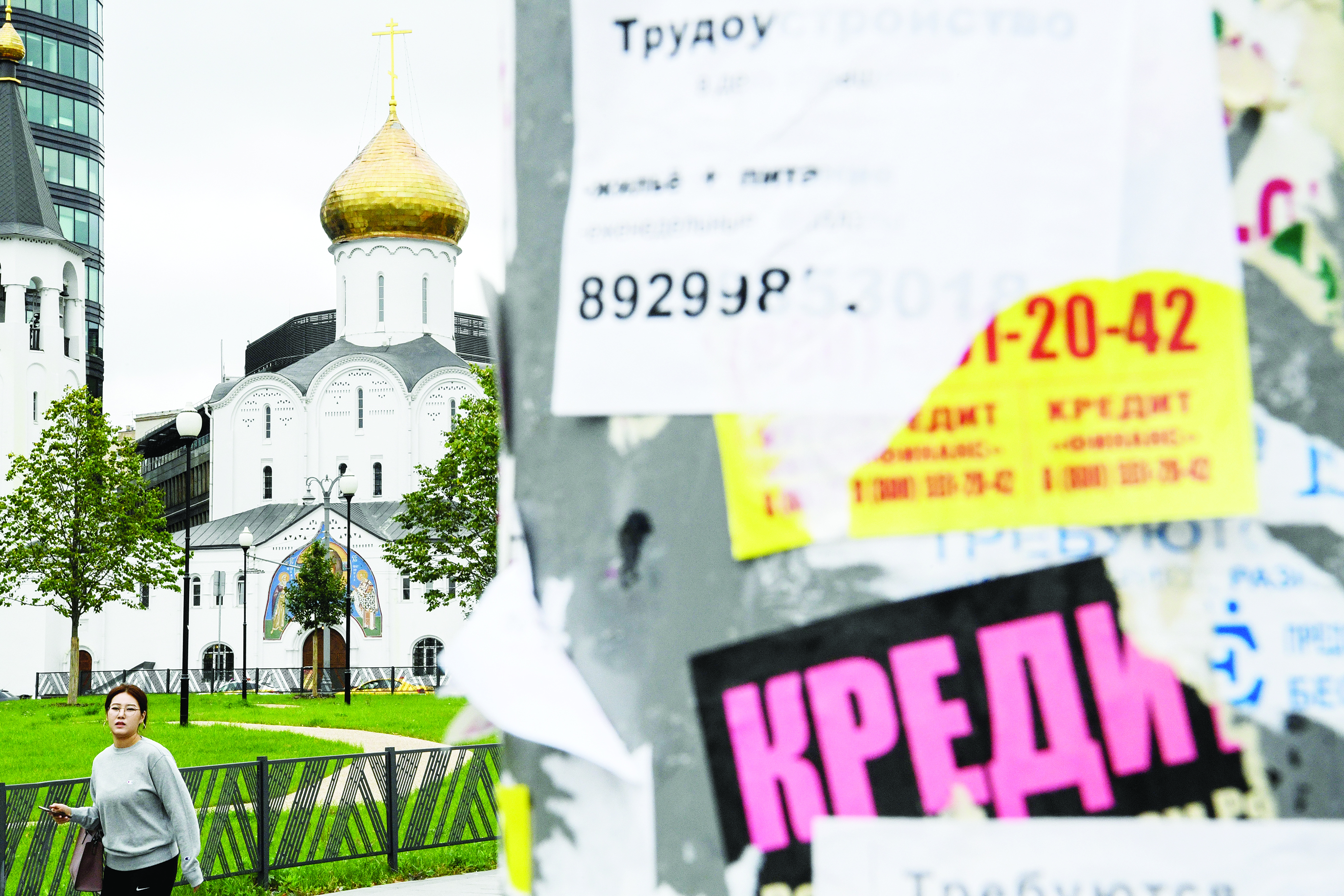
MOSCOW: New
machines popping up in Russian shopping centers seem innocuous enough-users
insert their passport and receive a small loan in a matter of minutes. But the
devices, which dispense credit in Saint Petersburg malls at a sky-high annual
rate of 365 percent, are another sign of a credit boom that has authorities
worried.
Russians, who
have seen their purchasing power decline in recent years, are borrowing more
and more to buy goods or simply to make ends meet. The level of loans has grown
so much in the last 18 months that the economy minister warned it could
contribute to another recession. But it's a sensitive topic. Limiting credit
would deprive households of financing that is sometimes vital, and could hobble
already stagnant growth.
The Russian
economy was badly hit in 2014 by falling oil prices and Western sanctions over
Moscow's role in Ukraine, and it has yet to fully recover. "Tightening
lending conditions could immediately damage growth," Natalia Orlova, chief
economist at Alfa Bank, said. "Continuing retail loan growth is currently
the main supporting factor," she noted. But "the situation could blow
up in 2021," Economy Minister Maxim Oreshkin warned in a recent interview
with the Ekho Moskvy radio station. He said measures were being prepared to
help indebted Russians. According to Oreshkin, consumer credit's share of
household debt increased by 25 percent last year and now represents 1.8
trillion rubles, around $27.5 billion.
For a third of
indebted households, he said, credit reimbursement eats up 60 percent of their
monthly income, pushing many to take out new loans to repay old ones. Alfa
Bank's Orlova said other countries in the region, for example in Eastern
Europe, had even higher levels of overall consumer debt as a percentage of
national output or GDP. But Russian debt is "not spread equally, it is
mainly held by lower income classes," which are less likely to repay, she
said.
'People don't
have money'
The situation has
led to friction between the government and the central bank, with ministers
like Oreshkin criticizing it for not doing enough to restrict loans. Meanwhile, economic growth slowed sharply
early this year following recoveries in 2017 and 2018, with an increase of just
0.7 percent in the first half of 2019 from the same period a year earlier. That
was far from the 4.0 percent annual target set by President Vladimir Putin-a
difficult objective while the country is subject to Western sanctions. With 19
million people living below the poverty line, Russia is in dire need of
development.
"The problem
is that people don't have money," Andrei Kolesnikov of the Carnegie Centre
in Moscow wrote recently. "This is why we can physically feel the
trepidation of the financial and economic authorities," he added.
Kolesnikov
described the government's economic policy as something that "essentially
boils down to collecting additional cash from the population and spending it on
goals indicated by the state." At the beginning of his fourth presidential
term in 2018, Putin unveiled ambitious "national projects."
The cost of those
projects-which fall into 12 categories that range from health to
infrastructure-is estimated at $400 billion by 2024, of which $115 billion is to
come from private investment. A rise in value-added tax on January 1 that was
presented as crucial for the projects contributed to Putin's fall in popularity
over the last year. "If the debt bubble suddenly bursts, how will people
behave?" Kolesnikov asked.
"They will be left without money" while authorities continue
to spend on grand but ultimately unprofitable projects, the analyst warned.
He cited
grandiose "patriotic" undertakings such as a bridge connecting
Sakhalin island to the mainland in far eastern Russia, and the creation of a
"Russian Vatican" in the ancient monastery town of Sergiev Posad
outside Moscow. That will come at a "diabolical cost", he
quipped. - AFP











